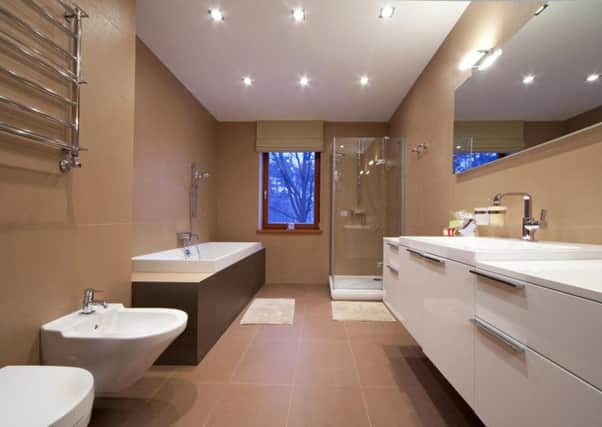Lighten up for bathtime


Recessed spotlights on a dimmer switch are one of the best solutions (a s long as they’re bathroom compatible), because you can adjust the brightness to the task in-hand. Walls lights can also be bright, task lighting, especially around the basin, or soft lighting when you don’t want the ceiling light/s on.
Bathroom lights must be suitable for the particular ‘zone’ they’re in; zones which are worked out according to their proximity to the taps and shower, with zone 0 being inside the bath and shower. All good manufacturers and retailers should say which zone/s their bathroom lights are suitable for, some even have a diagram of the zones on the box or you can easily find this online too.
Advertisement
Hide AdAdvertisement
Hide AdLights designed for inner bathroom zones have encased bulbs for safety, but even in outside zones, it’s a good idea to have this type of light fitting because steam can corrode ‘open’ fittings over time.
If you don’t have an extractor fan in your bathroom, get an electrician to fit one. Extractors reduce the damage caused by steam and moisture, and help prevent mould and mildew. In bathrooms without a window, common in flats, an extractor is even more important and should be switched on every time you shower or bath. Extractors are often wired to come on with the ceiling light, although they can be switched off independently.
The switch for the extractor is usually outside the bathroom, as is the ceiling light switch, but this isn’t ideal if you want to put the light on when you’re naked and already in the bathroom. For this reason, you may prefer a pull cord for the ceiling light because this can be located in the room.
While you sometimes find electric wall heaters in bathrooms, these days most of use a centrally heated towel rail or radiator and/or underfloor heating to keep the room warm. Underfloor heating makes stepping out of the shower or bath on a cold day a pleasure, but fitting it will involve some disruption - as it isn’t always easy to retrofit, often it’s better to wait until you’re redoing the bathroom.